Those who usually make use of extensions or appliques on a daily basis know that they need certain periodic maintenance to stay perfect over time.
The durability of the product is also completely associated with this issue because a well-cared-for hair will certainly have much more longevity, and the cost-benefit of the purchase will have been better used.
But taking care of such a product also requires a certain amount of attention from the consumer.
You need to be aware of the specifics of each item, such as extensions and human or synthetic hairpieces, which require differentiated care at certain times.
Synthetic fiber, especially, should receive more attention during use because its manufacturing material is much inferior to that of natural hair (learn more). So, how to proceed?

People who have synthetic fiber products usually manage to tidy up the strands more easily compared to those with natural hair.
But you have to remember that synthetic fibers are sensitive to heat and sweat, so often, short extensions can be more durable, especially for wearers in very hot regions.
How To Untangle the synthetic extension
Before starting the process of washing your synthetic extension, it is always good to remove all tangles with your fingertips in a very gentle way.
If your extension has short strands, gently untangle the strands while still dry and turn the extension upside down so that the hair stays inside and the cap stays outside.
If it is longer, spray water with a little conditioner to untangle. Attention not to pull the fiber because it is not elastic. To make it last longer, use appropriate brushes for an extension.
Read: How To Relieve Itchy Scalp From Extensions
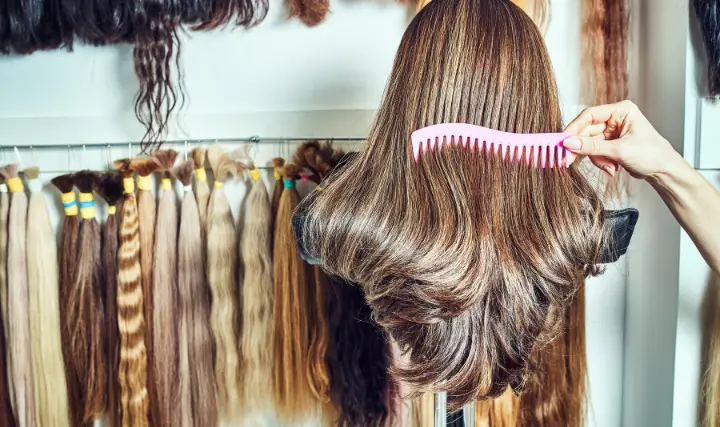
Washing the synthetic extension
Next, use a basin of cold water (about 1 liter) and then add about 15 ml of shampoo. Let it soak for 2 to 5 minutes and rinse. After that, turn the extension to normal.
For the conditioner part, do basically the same process with the same amount. Leave it on for 2 minutes and partially rinse.
Remove excess water by gently wrapping the extension with a towel and let it dry naturally on a proper stand.
After the extension is completely dry, comb it out with your fingers or, if you prefer, use a hair brush suitable for extensions.
Synthetic extension High Hit Fiber
There are some types of synthetic extensions that are made from a special High Hit Fiber. This fiber is usually more heat resistant.
However, the piece should not be exposed to very high temperatures, as there is a risk of melting.
The fiber can withstand up to about 180 degrees without serious damage. Remember that the higher the temperature used in the process, the easier it is to damage the hair.
Maintaining The Human Synthetic Hair Extension
For the human synthetic hair extension implanted at the production site, it is recommended that the maintenance is done in their Studio.
This is because they have an adequate and necessary structure to provide durability and maintain the conformity of your human hair extension.
In case it is not possible to make use of their services, it is recommended to use a rubber head so that the wires do not get into the fabric.
Under no circumstances should the extension be washed in a random way as if it were simple clothing.
Follow the procedures below for proper maintenance, sanitizing, and styling of your human hair extension.
What you need to wash your synthetic hair extension
To be able to perform the complete cleaning of your synthetic hair extension, it is important to have some basic items on hand. This is done to make sure the washing is done correctly, without damaging the strands. These are:
1 – Bench stand
2 – Mannequin
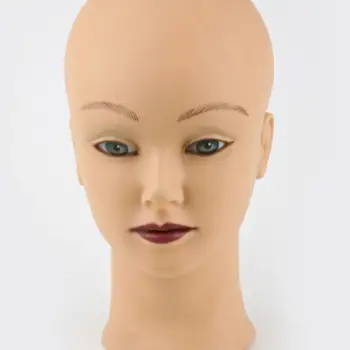
3 – Map pins
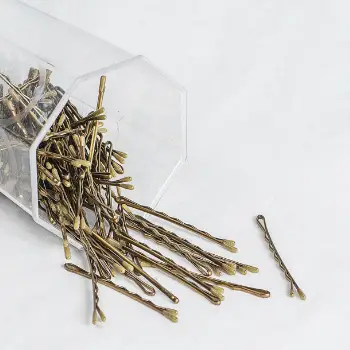
4 – Wide comb
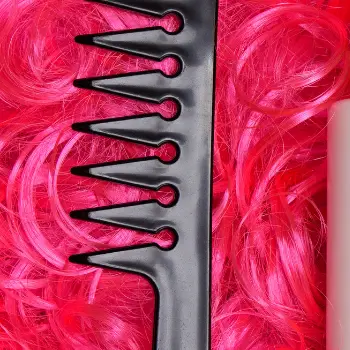
5 – Rounded Tips Brush

6 – Water spray
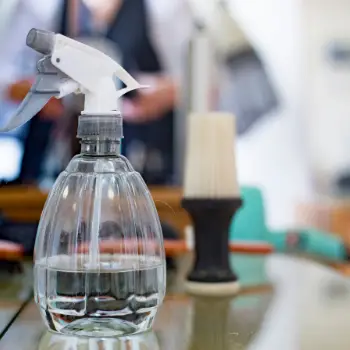
How To Wash and Care For The High Hit Fiber Extension
In order to wash your High Heat Fiber synthetic extension, you should use cold water and a suitable shampoo with no salt in its formulation. And for longer durability, make use of appropriate combs and brushes.
- Gently untangle the still dry wires and turn the extension inside out so that the hair stays inside and the cap stays outside.
- Soak your extension for a period of about 10 minutes in a basin with water at room temperature, and add a spoonful of diluted shampoo.
- Shake it gently, avoiding rubbing or kneading the extension. Next, rinse it in cold water, turning it to its normal position soon after.
- Place your extension on an extension holder (check the models) and let it dry naturally. Never comb a wet synthetic fiber extension.
- After drying, use your fingertips to be able to comb the accessory, or, if you prefer, do it with a brush or a more suitable comb.
Perfect curls! Modeling your synthetic hair extension
We must say that the common synthetic extension can not receive heat, only the High Hit Fibers, so always check before what kind of fiber is being used. To model the extension with the Babyliss, the best temperature is 120 to 140 degrees.
It is important to always perform the process with the fiber dry to avoid damaging the strand.
Do not remove the appliance until the curl is according to what you want, so it will last longer; you can use a fixative to further increase the durability of the curl.
Whenever curling the extension, test first on a single strand to make sure that the temperature of the Babyliss is just right.
Suitable enough to be able to curl the curl and not so high as to damage the fiber. After checking, finish the process on the rest of the extension. To undo the curls, simply place them in hot water.
Conclusion
As many people know, washing your synthetic or natural hair extension by yourself requires some basic care. One of them is the extension headstand, which provides the necessary support for the piece during the washing process.
If you don’t have a rubber or wooden support to wash your piece, do the same process with the extension on your own head during the bath.
The important thing is to be careful about implanting the wires into the fabric.
If they get stuck in the root part, they should be untangled using a wide tooth comb carefully and slowly.
This area of the hair, about 2.5 cm from the canvas, is where the strands are inverted. This is so that the knots for attaching them to the canvas can be made, what we call “hook”.
When the extension is very greasy, wash it with hot water to clean it precisely.